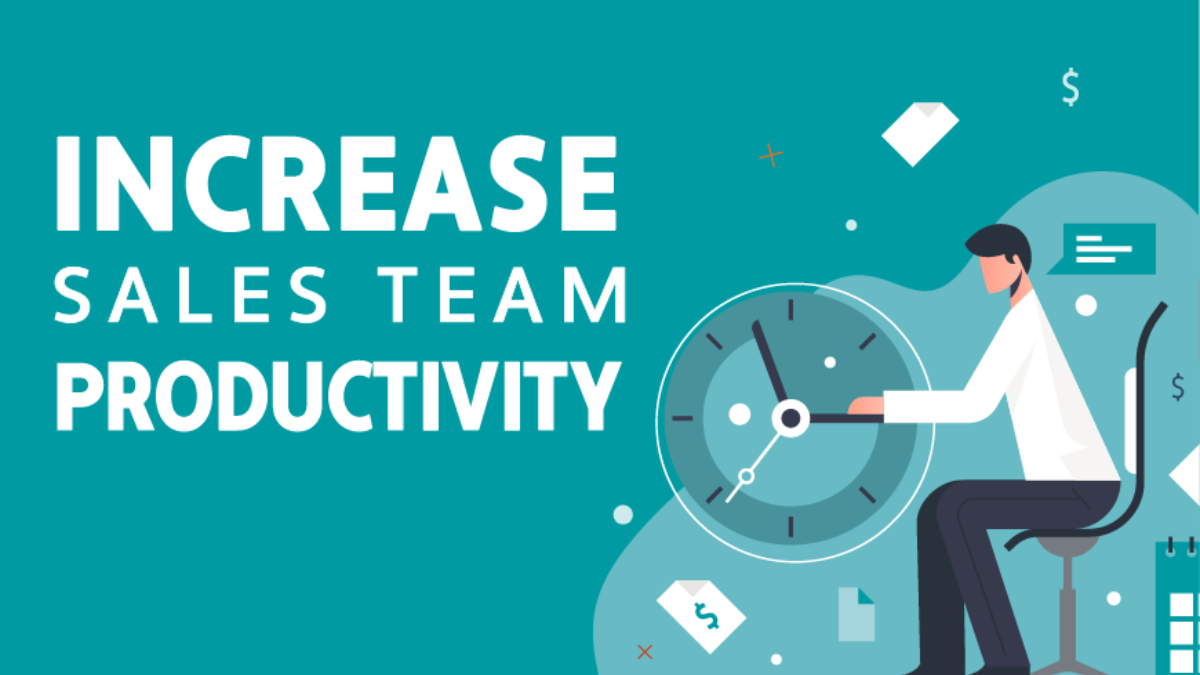In the rapidly evolving digital age, staying ahead in sales requires more than charm and charisma. With growing competition and customer expectations, companies must embrace digital solutions to increase sales productivity, streamline processes, and enhance customer relationships. This article explores how businesses can boost sales productivity through digital tools, platforms, and strategies that empower sales teams to close more deals in less time.
Understanding Sales Productivity
What Is Sales Productivity?
Sales productivity measures how effectively a sales team converts time and effort into revenue. It reflects how efficiently salespeople perform tasks that drive business growth, such as engaging leads, closing deals, and managing customer relationships.
Key Elements of Sales Productivity
- Time Management
- Lead Generation and Conversion
- Sales Process Optimization
- Use of Technology and Data
- Team Collaboration
Why Digital Solutions Matter in Sales
Digital Transformation in Sales
The digital transformation in the sales domain allows for automated workflows, real-time data analysis, and smarter customer interactions. Digital tools replace manual tasks and outdated systems, making the sales process faster, more data-driven, and customer-centric.
Challenges That Digital Tools Solve
- Inconsistent lead follow-up
- Disorganized pipelines
- Time-consuming data entry
- Poor collaboration between departments
- Lack of insight into customer behavior
Top Digital Solutions to Boost Sales Productivity
1. Customer Relationship Management (CRM) Tools
CRM platforms like Salesforce, HubSpot, and Zoho streamline client interactions, track communication, and automate sales tasks. They centralize customer information, enabling sales reps to respond faster and more personally.
Benefits of CRM:
- Improved lead management
- Automated reminders and follow-ups
- Sales forecasting capabilities
- Integrated communication channels
2. Sales Automation Tools
Sales automation platforms handle repetitive tasks like email outreach, follow-up scheduling, data logging, and lead scoring.
Popular Tools:
- Outreach
- Salesloft
- Apollo.io
Productivity Gains:
- More time for strategic selling
- Reduced human error
- Enhanced campaign targeting
3. AI-Powered Analytics
AI solutions help analyze customer data to predict buying behavior, recommend next steps, and identify high-potential leads. This leads to smarter decision-making and higher close rates.
Tools to Consider:
- Clari (forecasting)
- Gong.io (conversation intelligence)
- Chorus.ai (sales coaching)
4. Sales Enablement Platforms
These platforms ensure that reps have access to the right content at the right time—pitch decks, case studies, or product sheets.
Key Platforms:
- Seismic
- Highspot
- Showpad
Outcomes:
- Better sales conversations
- Consistent messaging
- Shorter sales cycles
5. E-Signature and Contract Management Tools
Tools like DocuSign and PandaDoc speed up deal closure by allowing clients to sign contracts digitally—no printing, scanning, or waiting.
Impact on Sales:
- Faster deal closure
- Reduced paperwork errors
- Legal compliance tracking
6. Lead Generation and Prospecting Software
Using platforms like LinkedIn Sales Navigator, ZoomInfo, and Lusha, sales teams can find, qualify, and reach out to potential leads effectively.
Benefits:
- Quality over quantity in leads
- Real-time data enrichment
- Personalized outreach
7. Communication and Collaboration Tools
Platforms such as Slack, Microsoft Teams, and Zoom enhance real-time communication between sales teams and other departments like marketing, support, and product.
Enhancements:
- Better alignment between teams
- Faster decision-making
- Instant access to shared files and feedback
Digital Sales Strategies That Work
Create a Digital Sales Playbook
A digital playbook aligns your team with best practices, approved templates, ideal messaging, and digital selling techniques.
Leverage Social Selling
Sales reps using platforms like LinkedIn to build relationships, share content, and connect with prospects can significantly improve conversion rates.
Implement Sales Cadences
Tools like Outreach and Salesloft allow for structured sequences of emails, calls, and follow-ups to keep leads engaged over time.
Focus on Data-Driven Sales
By tracking KPIs like email open rates, lead response times, and conversion ratios, businesses can refine sales strategies and allocate resources more effectively.
Best Practices to Maximize ROI from Digital Solutions
Train Your Sales Team
Adopting a tool is only effective if the sales team knows how to use it. Regular training and onboarding are essential.
Integrate Tools into Existing Workflows
Select tools that integrate well with your current tech stack, including email, CRM, and communication tools.
Measure Impact
Track metrics such as:
- Sales cycle length
- Revenue per rep
- Conversion rates
- Customer acquisition cost (CAC)
Keep It Simple
Avoid overwhelming your team with too many platforms. Select tools that consolidate multiple functions into one dashboard.
Case Studies: Digital Solutions in Action
Case Study 1: Salesforce CRM Transforms Mid-Sized SaaS Company
A SaaS company saw a 30% increase in sales productivity within six months after implementing Salesforce CRM and automating follow-ups and pipeline tracking.
Case Study 2: AI-Driven Prospecting at a Fintech Startup
By using ZoomInfo and Outreach, a fintech startup shortened its sales cycle by 25% and doubled its qualified leads in under a quarter.
Case Study 3: E-Signature Revolution for Real Estate Agency
Switching to DocuSign helped a real estate firm cut their contract turnaround time from 3 days to a few hours—dramatically improving client satisfaction and deal velocity.
Common Pitfalls to Avoid
Too Many Tools
Using multiple disconnected tools can confuse your sales team and reduce productivity.
Ignoring Data Security
Ensure your platforms comply with data privacy regulations such as GDPR and HIPAA.
Lack of Team Adoption
Without buy-in from the team, even the best tools will be underutilized. Incentivize usage and provide constant support.
The Future of Sales Productivity Is Digital
As artificial intelligence, automation, and analytics continue to advance, the sales landscape will keep evolving. Embracing digital solutions today sets the foundation for scalable, customer-driven, and data-empowered growth.
Emerging Trends to Watch:
- AI Coaching – Real-time feedback during sales calls
- Augmented Reality (AR) – Virtual product demonstrations
- Voice Technology – Smart assistants for sales reps
- Predictive Analytics – Anticipating customer needs before they arise
Conclusion
Boosting sales productivity with digital solutions is no longer optional—it’s a necessity for businesses looking to stay competitive. From CRM tools and AI analytics to sales automation and e-signature platforms, digital technology enables sales teams to work smarter, close deals faster, and deliver superior customer experiences.
But technology alone isn’t the answer. It’s the combination of digital tools, strategic integration, and team adoption that unlocks real productivity gains. Invest in the right platforms, provide training, and continuously refine your approach to achieve long-term success.
Frequently Asked Questions (FAQs)
Q1. What is the most effective digital tool to boost sales productivity?
Answer: CRM platforms like Salesforce or HubSpot are foundational because they centralize customer data, automate tasks, and improve lead tracking and communication.
Q2. How can automation help sales teams?
Answer: Automation handles repetitive tasks like sending follow-ups, entering data, and lead scoring—freeing up time for salespeople to focus on selling and nurturing relationships.
Q3. Is AI reliable in sales processes?
Answer: Yes, AI is increasingly reliable, especially for tasks like predictive lead scoring, conversation analysis, and forecasting. It provides data-driven insights that enhance decision-making.
Q4. How can I ensure my sales team adopts new digital tools?
Answer: Involve your team in the selection process, provide hands-on training, integrate tools into their daily workflow, and recognize or reward consistent use.
Q5. Are digital sales tools expensive?
Answer: Many tools offer scalable pricing based on company size or usage. While some platforms are premium-priced, the ROI from increased productivity and faster deal cycles often justifies the investment.



